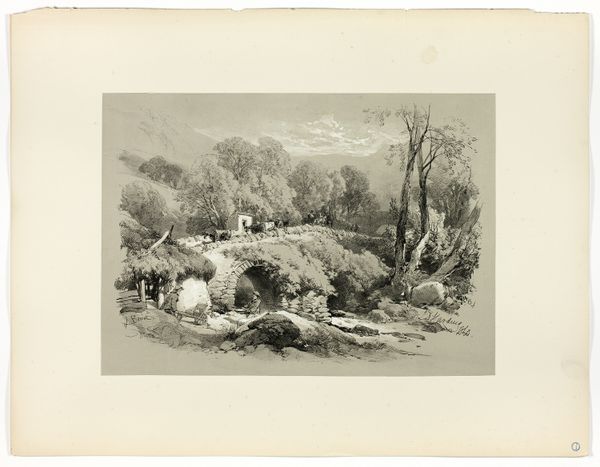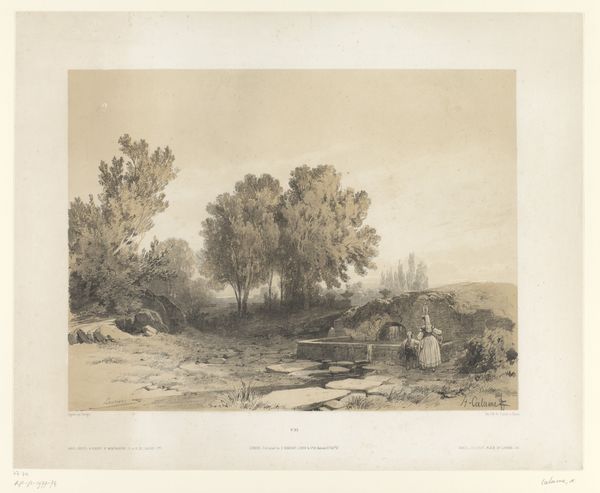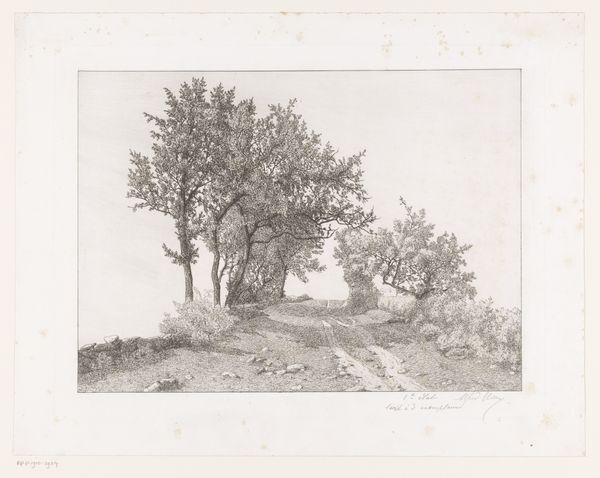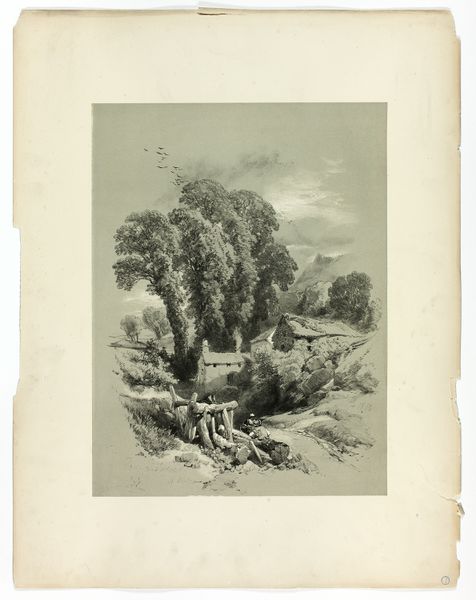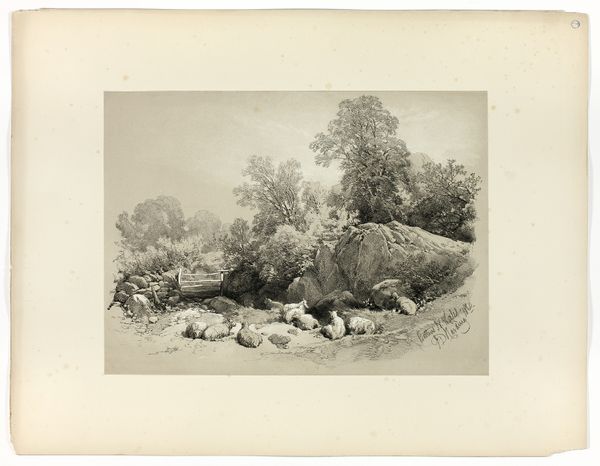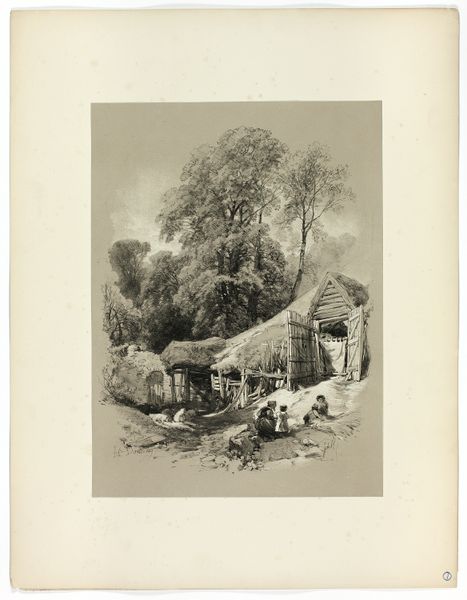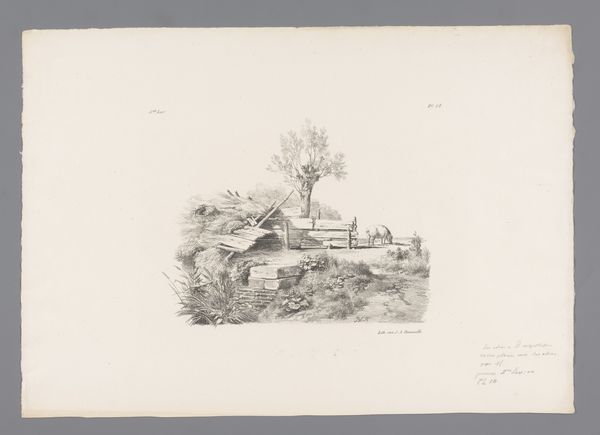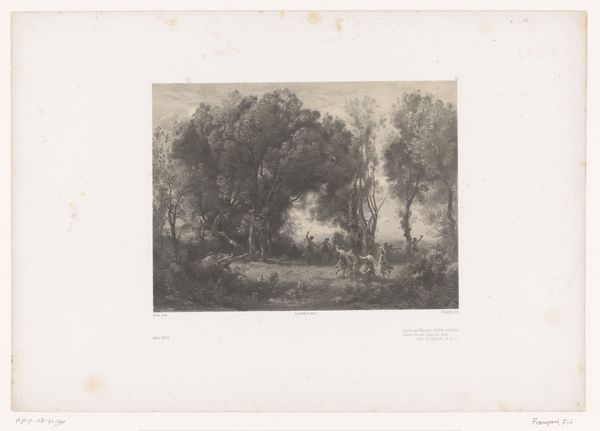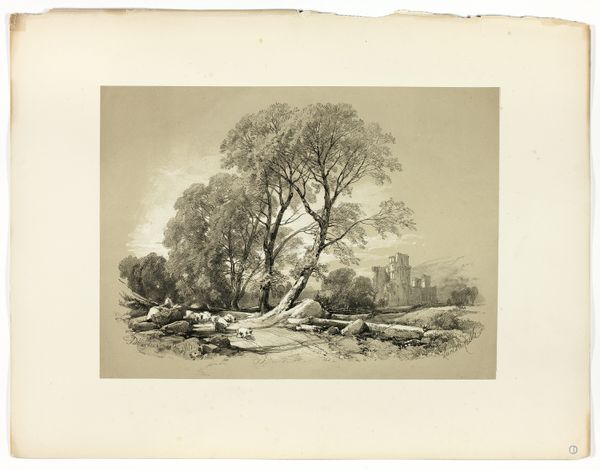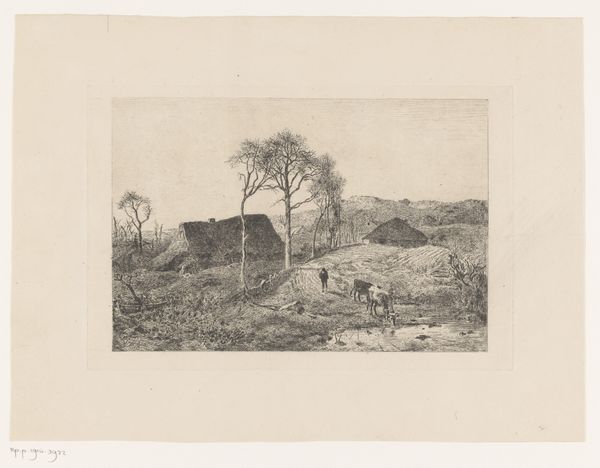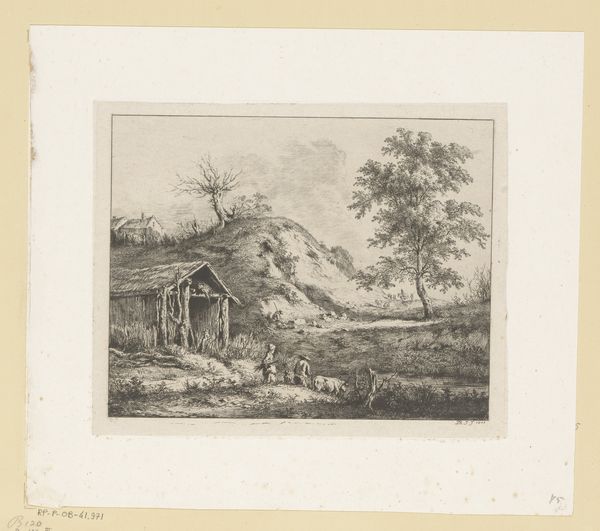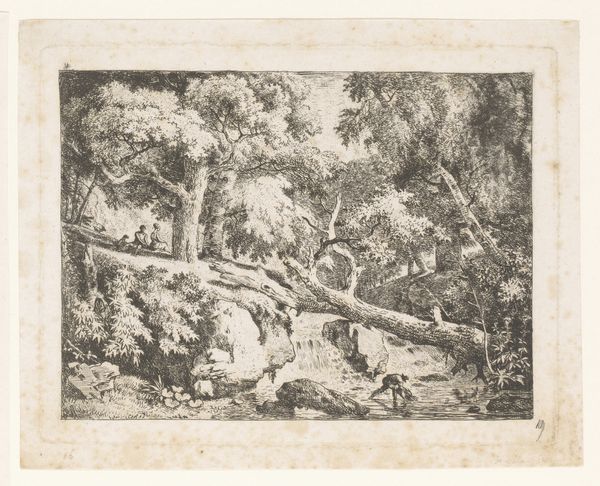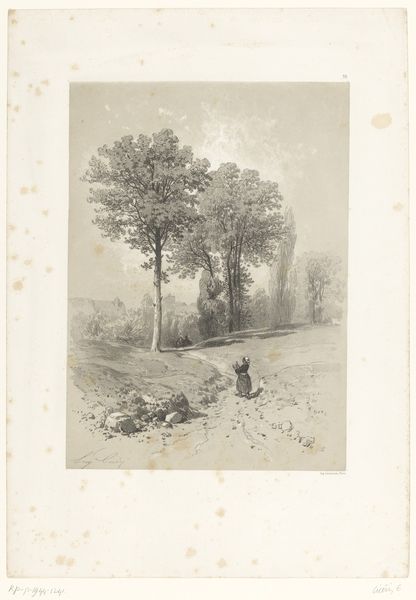
Near Bettws y Coed, N. Wales, from Picturesque Selections 1860
0:00
0:00
Dimensions: 288 × 380 mm (primary support); 430 × 560 mm (secondary support)
Copyright: Public Domain
This artwork was made by James Duffield Harding, capturing a scene near Bettws y Coed in North Wales. It's a lithograph, meaning it was printed from a stone surface. The use of lithography is crucial here. Instead of traditional etching or engraving, where an artist laboriously carves into metal, lithography allows for a more direct translation of the artist’s hand. Harding could draw on the stone with a greasy crayon, and the printing process would capture the nuances of his marks. It’s a relatively quick method, which made it perfect for producing picturesque views for a growing market of tourists eager to consume images of the British countryside. The lithograph would have been part of a larger publication, cheaply made and widely distributed. This speaks to the changing relationship between art, labor, and consumption in the 19th century. Ultimately, understanding the "how" of this image – its lithographic nature – helps us grasp its intended audience and the broader social context in which it was made. It bridges the gap between ‘high art’ and the commercial world.
Comments
No comments
Be the first to comment and join the conversation on the ultimate creative platform.
